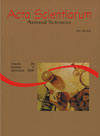<b>Forage intake and performance of Holstein lactating cows fed on tropical grassland pastures</b> - DOI: 10.4025/actascianimsci.v29i3.549
Abstract
The structure of Dwarf Elephantgrass (Pennisetum purpureum Schum. cv. Mott) (DEG) and Tifton 85 (Cynodon dactylon x Cynodon nlemfuensis) (T85) pastures and its relation with forage intake and the performance of lactating cows were evaluated. The trial was conducted in the growth season of 2004/05, in an area belonging to the Celeste Gobbato State Technical School, in the city of Palmeira das Missões, State of Rio Grande do Sul, Brazil. Twelve Holstein cows were used as testers, fed exclusively on pasture under continuous grazing, in two paddocks per treatment. Forage density was higher on T85 than in DEG, due to its higher forage production. The most accessible pasture strata for animal intake (above 20 and 10 cm height for DEG and T85, respectively) presented different structures, but forage intake and milk production were similar in both treatments. The chemical composition of these pasture layers and of their respective samples were similar in both pasture types, indicating the analysis of chemical composition of the most accessible strata to grazing pasture as a useful tool for inferences about the quality of potentially consumable forage. Tropical pastures allow milk productions higher than 17 kg cow-1 day-1, even without the use of supplementation.Downloads
Download data is not yet available.
Published
2007-12-14
How to Cite
Maixner, A. R., Quadros, F. L. F. de, Kozloski, G. V., Montardo, D. P., Rossi, G. E., & Aurélio, N. D. (2007). <b>Forage intake and performance of Holstein lactating cows fed on tropical grassland pastures</b> - DOI: 10.4025/actascianimsci.v29i3.549. Acta Scientiarum. Animal Sciences, 29(3), 241-248. https://doi.org/10.4025/actascianimsci.v29i3.549
Issue
Section
Pasture and forage utilization
DECLARATION OF ORIGINALITY AND COPYRIGHTS
- I Declare that current article is original and has not been submitted for publication, in part or in whole, to any other national or international journal.
The copyrights belong exclusively to the authors. Published content is licensed under Creative Commons Attribution 4.0 (CC BY 4.0) guidelines, which allows sharing (copy and distribution of the material in any medium or format) and adaptation (remix, transform, and build upon the material) for any purpose, even commercially, under the terms of attribution.
Read this link for further information on how to use CC BY 4.0 properly.
0.9
2019CiteScore
29th percentile
Powered by 








































